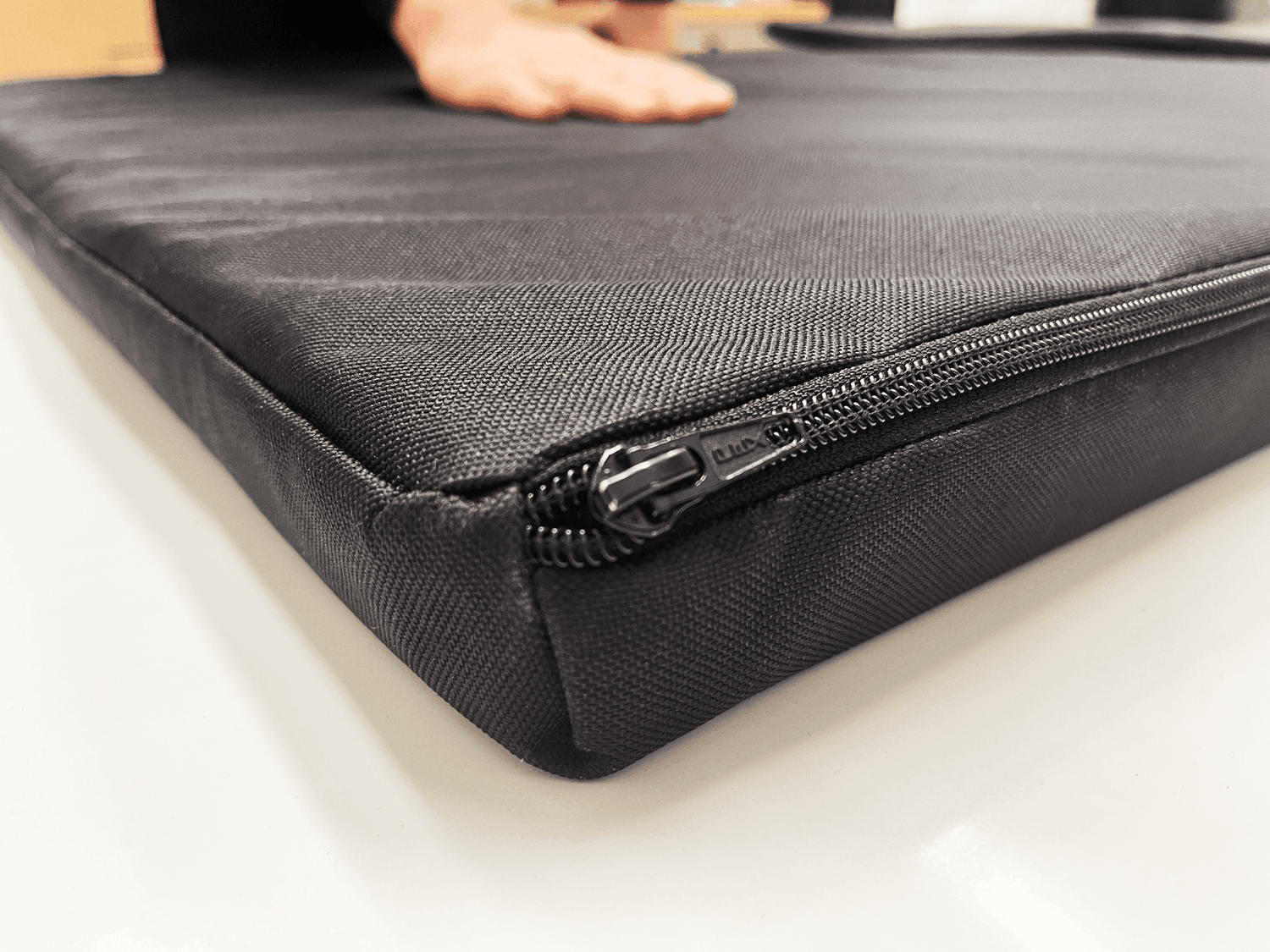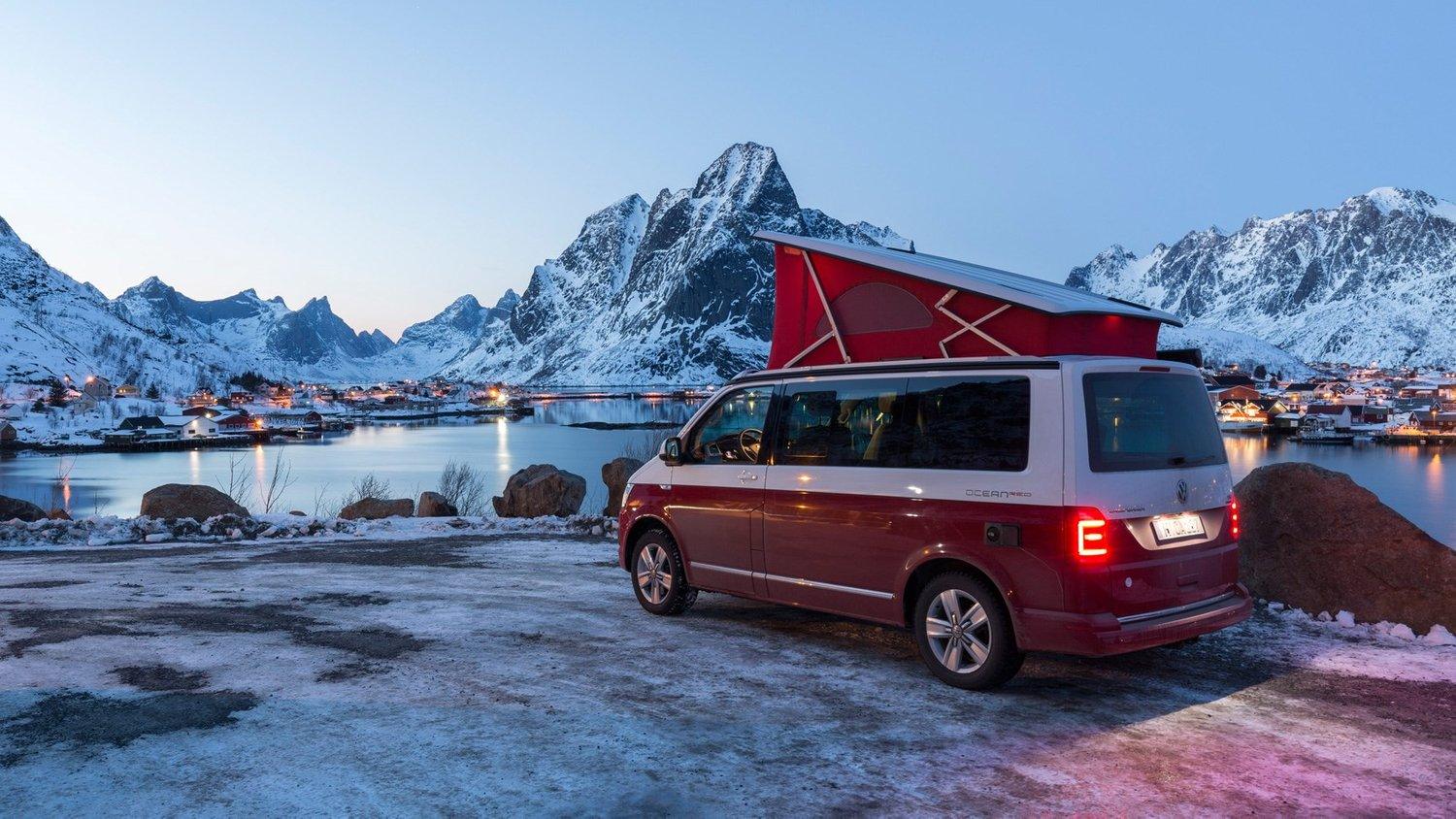Looking for a comfortable campervan bed while on your next road trip?
We’ve put together the ultimate guide to campervan beds - from the best mattresses to make your sleep more comfortable, to storage ideas for maximising space. Whether you're a DIYer or prefer products that are ready-to-go, we've got you covered!

What Types of Campervan Bed are available?
There are several types of campervan beds available, depending on the campervan conversion layout you are thinking about. The most popular type is the fixed bed, which is permanently installed in the campervan and usually folds down from the wall or converts from the seating area.
This type of bed is comfortable and convenient, but it can be difficult to access if you need to use the kitchen or bathroom facilities. Another option is a fold-down bed, which can be stored away during the day to provide more space.
These beds are often lighter and easier to set up than fixed beds, but they can be less comfortable. Finally, there are pop-up roofs and elevating roofs, which provide extra space for sleeping but can make it difficult to stand up inside the campervan.
Here are some of the main campervan beds that are available:
Fixed Campervan Bed
A fixed camper bed is usually a good budget option done in cheaper campervan conversions. Usually made out of wood and fixed to the floor. It’s permanently out and takes up much of the rear of the van. It can be a good option for self-converters. However this type of bed won’t help with the resale value of your campervan down the line.
Pop top Campervan Bed
If you’re planning on having a pop top installed in your camper then this is the easiest way to add a bed. Most pop tops come with a platform that doubles as your “upstairs” bed. Some campervan conversions will only have this platform bed. Meaning the panel van area of the van is left empty. This is good if you use the van for work or want to transport large items like bikes.
To get into the bed you need to climb on the front seats. Which isn’t always possible for everyone. Definitely take this into account when you design your campervan conversion layout.
Rock and Roll Campervan Bed
Most campervans have a bed built in as part of the campervan conversion. In economy conversions it will usually be a rock and roll bed. The bed is made up of 3 parts. In it’s first formation it makes the seat, to be used when driving. When you pull the bed from the front, it “rocks and rolls' flat. This then forms a small double bed.
This type of bed is ideal for campervans because it maximizes space and can be easily stored when not in use. Additionally, the fold-down design means that the bed can be quickly set up and taken down.
You need to make sure you take safety into consideration with these beds. There are lots of smaller campervan converters that fabricate their own beds to sell. However these beds have often not undergone any testing. This is even more important if you’re considering seating children in the back of the van when driving. You need to make sure that the seatbelts are going to protect in the event of a collision.
Look out for rock and roll beds that have been M1 crash tested and carry the TUV approval mark.
A VW T6 M1 crash tested rock and roll bed will cost somewhere in the region of £1,500 to £4,000. Be weary of anyone offering you a bed with seat belts for any less. There are some great second hand options out there. Check out eBay and Facebook marketplace.
RIB Bed
The RIB bed is probably the most common bed used by professional campervan converters in the UK. These beds are made in Europe and are the safest option on the market. They do come with a hefty price tag. It’s worth noting that campervans with RIB beds tend to fetch a much higher price than those with a rock and roll bed.
RIB beds come in various different widths, depending on what campervan conversion layout you’re trying to achieve. The optional extras include different upholstery, headrests, armrests, and ISOFIX.
A brand new RIB bed in a VW Fabric will cost somewhere between £2,500 and £6,000.

How to make a campervan bed frame?
If you're planning a DIY campervan conversion with a fixed bed, one of the first things you'll need to do is build a bed frame. This can be a fairly simple project, even for those with limited woodworking experience. The most important thing is to make sure that the bed frame is sturdy and will be able to support the weight of whoever is sleeping on it.
One option for building a campervan bed frame is to use recycled pallets. Pallets are often used in shipping and can be easily repurposed for a campervan conversion. To build a pallet bed frame, simply line up several pallets side-by-side and secure them together. You can then add a mattress on top of the frame.
Another option for building a campervan bed frame is to use 2x4 wood. This option will likely be more expensive than using pallets, but it will also be much sturdier. To build a frame using 2x4s, start by cutting the lumber into 4 equal pieces. Next, take two of the pieces and attach them together at right angles using screws or nails. Repeat this step with the other two pieces of lumber. Once you have two basic frames, attach them together using screws or nails. You can then add crossbeams for additional support, if desired. Finally, add a mattress directly on top of the frame.
A fixed bed frame is a budget option and isn’t really a route we suggest. However for some people this will be the best option.
What campervan mattress options are available?
Campervan mattress options for your bed are available in a variety of shapes, sizes, and styles to suit your needs. You will need a mattress for the platform on your pop top bed. If you want to be able to leave the mattress in the roof when you pull the roof down you will need to sacrifice some comfort.
If you’re willing to store the mattress somewhere when the roof is down, there are far more options available to you.
Wildworx offers a mid range pop top roof mattress that’s able to stay in the roof when it’s pulled down.
If you have a rock and roll bed or a RIB bed you might want to consider a mattress topper. These can be made from memory foam and are very comfortable. The downside is that you have to store it somewhere when you’re not using it. Space can sometimes be tight on longer trips.
Some people use inflatable or air mattresses to improve the comfort of the camper bed. These are a good option as they’re less bulky to store. However they require setting up each evening.

What foam should I use for a campervan bed?
If you’re designing a bespoke conversion you might need to get a new mattress made to order. You’ll be able to find a local upholstery company who will make a mattress based on your specifications. They will want to know what type of foam you would like to use.
There are many different foam options. The most important thing to consider is how firm or soft you want the bed to be. If you want a firmer bed, then memory foam or latex foam would be a good option. If you want a softer bed, then polyurethane foam would be a better option.
Most upholstery companies will be able to offer you a memory foam option. If it’s for your pop top make sure you check if it will fit when the roof is pulled down.
You will want to include a removal cover for your mattress. This means you can take it off and wash it. Making it much easier to keep clean. Again, this is very easy for your local upholstery company to make for you.
Can you leave bedding in a camper over winter?
Winterising your camper is an important part of looking after your vehicle. If you're planning on leaving your campervan for long periods over winter, there are a few things you need to do to make sure it's properly winterised.
One of the most important things is to remove all bedding and stored items from the camper. This includes anything that might attract rodents or other pests, as well as any food items that could spoil.
You should also ensure that all windows and doors are securely sealed, and that any vents or openings are covered. In addition, it's a good idea to cover the camper with a tarp or other waterproof material to protect it from the elements.
We would also recommend putting disposable dehumidifiers in the vehicle to absorb any moisture. This should prevent mould from creeping in. One area that often becomes mouldy is the pop top roof canvas. Make sure it is dry when you close it at the end of the season. Remove your pop top roof mattress and store it inside in the dry.
By taking these precautions, you can help to ensure that your campervan conversion will be ready to hit the road when spring arrives.
How much weight can a campervan pop top bed hold?
A campervan conversion typically includes a bed, which is often located in the pop top area. The weight limit for a campervan pop top bed will vary depending on the specific campervan and the manufacturer that supplied the roof.
However, most campervan pop top roof beds can comfortably hold around 70 stone. Which is more than enough for two adults to sleep soundly in the pop top roof.

How to make a campervan bed more comfortable?
A good night's sleep is probably the most important part of any road trip. However campervans have limited space and it can be tricky to create a comfortable sleeping area. Here are a few tips to help you make the most of your campervan bed:
- Use high-quality sheets and blankets rather than sleeping bags. This will make a big difference in how comfortable you feel at night.
- If possible, use a mattress topper that is designed for campervans. These mattresses are usually thinner than regular mattresses, so they take up less space.
- Make sure the campervan is well ventilated. This will help to prevent stuffiness at night.
By following these tips, you can ensure that your campervan bed is as comfortable as possible.
Campervan beds for children and babies
There are a few options for babies and children. One option is to purchase a child safety net, this goes across the gap in the platform roof bed. This will stop children from rolling out of the pop top roof at night. Ideal for older children. The downside is that it is very cold to sleep with the pop top roof open in the winter. Meaning you might miss out on Autumn and Spring camping trips because the kids are too cold.
Another option is a type of hammock or bunk bed that goes across the driving and passenger seats of the campervan. These are great for smaller children. A company called Cabunk offers a bunk bed option for the front cab of the van. These options range in price from £200 - £500.

Wildworx Campervan Bed Upgrades
Your campervan bed is one of the most important aspects of your van. It's where you'll spend a good amount of time, so you want to make sure it's comfortable. Follow our guide and you'll be able to create the perfect bed for your needs.
If you have any questions or need help along the way, don't hesitate to get in touch. We're always happy to discuss your campervan conversion project.




